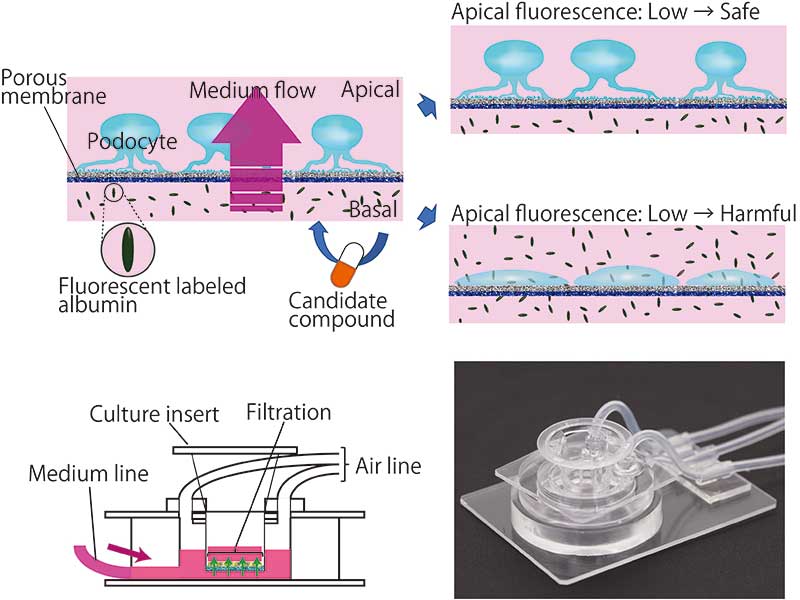Abstract
The goal of this study is to create the drug screening system that enables evaluating if the candidate drug is safe or not to the podocyte for the drug discovery research. There are slit diaphragms between neighboring podocyte foot processes, which prevent high molecular proteins from leaking into primary urine in the same way as the endothelium and the basement membrane. Some types of drugs could disrupt this filtration function and cause a serious problem such as the nephrotic syndrome which has a symptom of massive proteinuria and leads to renal failure.
 Microfluidic device for podocyte culture and drug screening
Microfluidic device for podocyte culture and drug screening
We aim to develop a drug screening system that cultures the podocytes on a porous membrane, provides a candidate drug to the podocytes, and circulates the medium including fluorescence conjugated albumin through the podocyte layer. By measuring the fluorescence intensity of the medium in the apical side, we can estimate the penetration efficiency and investigate to what extent the drug damages the podocytes. This means the albumin cannot migrate from the basal side to the apical side by the filtration function of the slit diaphragm if the drug is safe. However, if it is harmful, the albumin passes through the podocyte layer because of the broken slit diaphragm. Recently we have succeeded in developing the microfluidic system that demonstrates some in vivo-like filtrations and tried to materialize the in vivo-like podocyte layer on a porous membrane. Moreover we have figured out that the immortalized podocytes form the in vivo-like interdigitating foot processes.
 The interdigitating foot processes of immortalized podocytes
The interdigitating foot processes of immortalized podocytes
Collaboration
- Division of Nephrology and Endocrinology, University of Tokyo Hospital
- Kimura Lab, Tokai University
Sponsor
- AMED